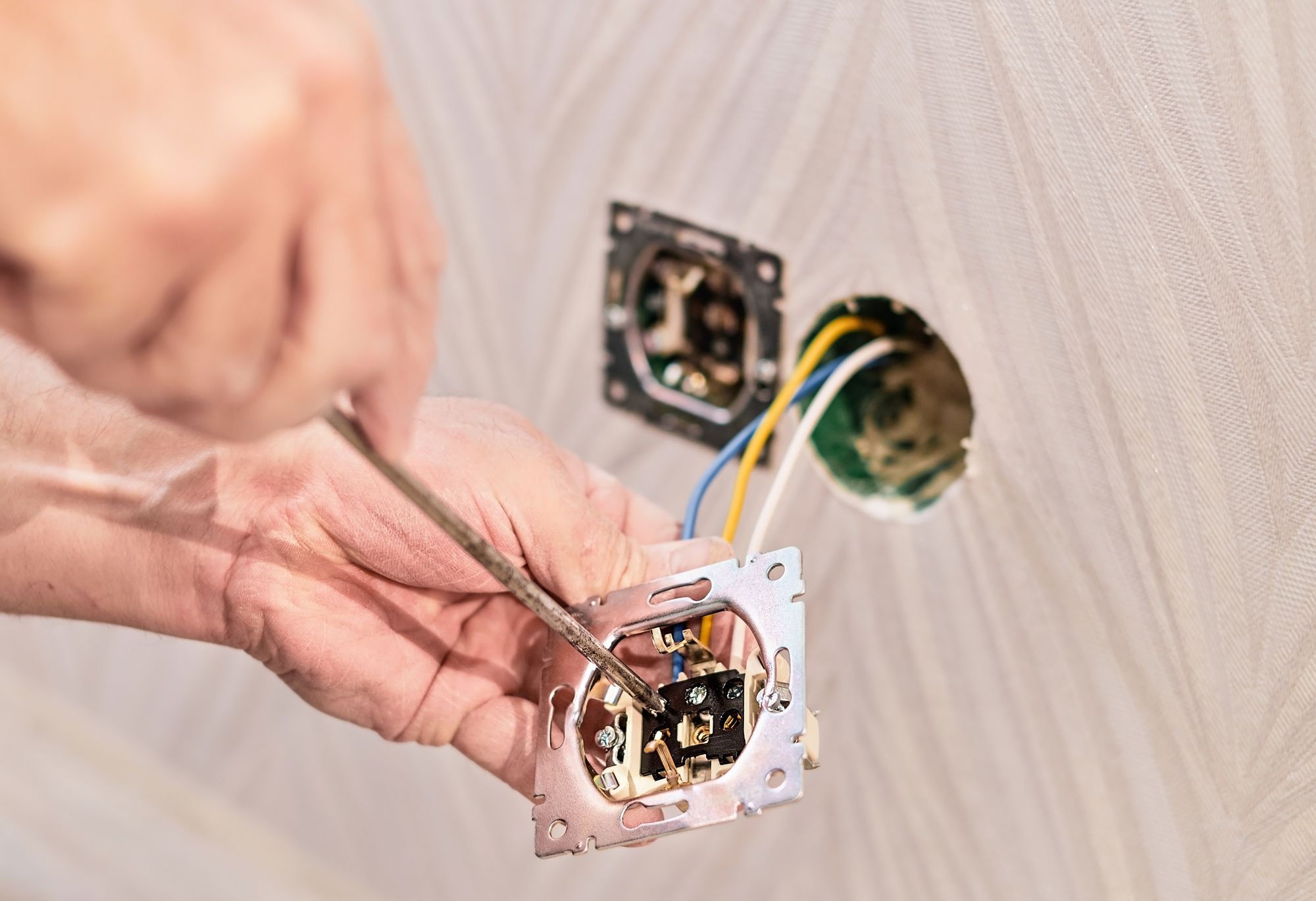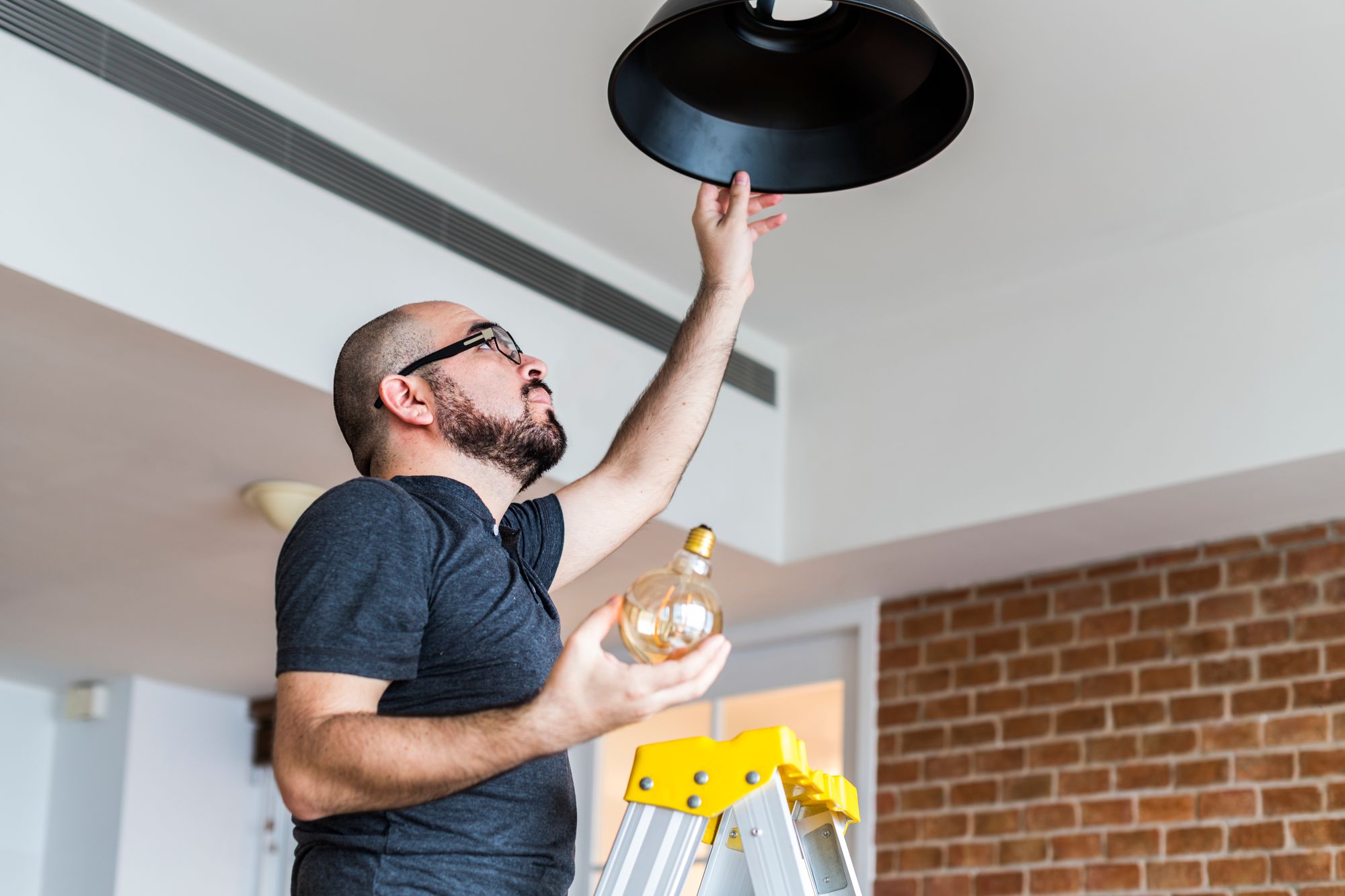Affordable Home Electrification: Your Comprehensive Guide to Accurate Pricing Estimates and Cost-effective Planning
Electrical projects can seem daunting but with careful planning and budgeting, it can be an affordable and rewarding endeavor.

Key Takeaways
- Home electrification costs vary by home size and region, but average $15,000-$25,000 for complete upgrades
- Energy-efficient upgrades can reduce utility bills by 30-50% annually
- Strategic planning and phased implementation can make projects more budget-friendly
- DIY options can save 40% on labor costs but require proper knowledge and permits
- Professional consultation is essential for safety and code compliance
- Government incentives and rebates can offset up to 30% of upgrade costs
- Modern electrical systems can increase home value by 2-5%
Affordable Home Electrification: Your Comprehensive Guide to Accurate Pricing Estimates and Cost-effective Planning
Introduction
Thinking about electrifying your home but worried about the costs? You're not alone.
With rising energy costs and increasing pressure to go green, many US homeowners are looking to convert their fossil fuel-dependent homes to all-electric systems. The good news? Home electrification doesn't have to break the bank.
In 2025, smart planning and strategic upgrades can make this transition both affordable and valuable for your home.
This guide will show you exactly how much different electrical projects cost, where to save money, and how to maximize available incentives.
Whether you're planning a complete home conversion or starting with smaller upgrades, we'll help you create a realistic budget and timeline for your electrification journey.

Common Electrification Projects
- Full Home Rewiring
- National Average: $6,500
- Cost Range: $2,000-$12,000
- Energy Savings: 20-30% on bills
- Additional Notes:
- Price varies by home size ($2-4 per square foot)
- 1,500 sq ft home average: $4,500
- 3,000 sq ft home average: $9,000
- Labor costs represent 40-50% of total
- Electrical Panel Upgrade
- National Average: $2,200
- Cost Range: $1,300-$4,000
- Additional Savings: Enables future upgrades
- Additional Notes:
- 100 amp to 200 amp: $2,000 average
- 200 amp to 400 amp: $4,000 average
- Permit fees: $100-300
- Essential for EV charging/heat pumps
- Heat Pump Installation
- National Average: $7,500
- Cost Range: $4,000-$12,000
- Energy Savings: 30-40% on heating/cooling
- Additional Notes:
- Mini-split systems: $4,000-$8,000
- Whole-house systems: $8,000-$12,000
- Federal tax credit: up to $2,000
- Average annual savings: $500-900
- EV Charging Station
- National Average: $1,300
- Cost Range: $500-$2,500
- Monthly Savings: $50-150 vs. gas
- Additional Notes:
- Level 1 charger: $500-800
- Level 2 charger: $1,200-2,500
- Installation costs: $200-800
- Tax credit: up to $1,000
Regional Cost Variations:
- Northeast: Add 15-20% to average costs
- West Coast: Add 10-25% to average costs
- Midwest: Average costs typically apply
- South: Subtract 5-15% from average costs
| Project | National Average | Cost Range | Potential Energy Savings |
|---|---|---|---|
| Full Home Rewiring | $6,500 | $2,000-$12,000 | 20-30% on bills |
| Electrical Panel Upgrade | $2,200 | $1,300-$4,000 | Enables additional savings |
| Heat Pump Installation | $7,500 | $4,000-$12,000 | 30-40% on heating/cooling |
| EV Charging Station | $1,300 | $500-$2,500 | $50-150/month vs. gas |
These prices reflect 2025 market rates and include both materials and professional installation. Costs may vary based on local regulations, material availability, and specific home requirements.

Budget-Friendly Electrical Upgrades
Quick-Win Upgrades for Maximum Impact
- LED Lighting Solutions
Initial Investment:
- Whole house (30-50 bulbs): $200-400
- Per bulb cost: $4-8
Annual Savings: $150-200
ROI Timeline: 2-3 years
Additional Benefits: - Bulbs last 15-25 years
- 75% less energy use
- Available tax rebates: $50-100
- Smart Thermostat Installation
Initial Investment:
- Basic models: $150-200
- Premium models: $250-300
- Professional installation: $100-150
Annual Savings: $100-150
ROI Timeline: 1-2 years
Features: - Mobile app control
- Learning capabilities
- Energy usage reports
- Utility company rebates: up to $100
- Motion Sensors
Initial Investment:
- Indoor sensors: $20-35 each
- Outdoor sensors: $35-50 each
Annual Savings: $50-75
ROI Timeline: 6 months
Best Locations: - Garages
- Bathrooms
- Outdoor security areas
- Storage spaces
- Smart Power Strips
Initial Investment:
- Basic strips: $25-30
- Advanced strips: $35-40
Annual Savings: $30-50
ROI Timeline: 8-12 months
Features: - Automatic shutoff
- Surge protection
- Energy monitoring
- Mobile control
| Upgrade | Cost | Annual Savings | ROI Timeline |
|---|---|---|---|
| LED Lighting (whole house) | $200-400 | $150-200 | 2-3 years |
| Smart Thermostat | $150-300 | $100-150 | 1-2 years |
| Motion Sensors | $20-50 each | $50-75 | 6 months |
| Smart Power Strips | $25-40 each | $30-50 | 8-12 months |
Real-Life Success Story: The Thompson Family (Denver, CO)
Detailed Breakdown of Their Energy Efficiency Journey:
Phase 1: Lighting Upgrade
- 45 LED bulbs installed: $280
- Areas covered: All living spaces, basement, garage
- Monthly savings: $20
Phase 2: Climate Control
- Smart thermostat installation: $225
- Programming for optimal efficiency
- Monthly savings: $15
Phase 3: Motion Sensors
- 6 sensors installed: $180
- Strategic placement: garage, bathrooms, outdoor areas
- Monthly savings: $10
Total Investment: $685
Annual Savings: $420 ($35/month)
Break-even point: 19 months
Total Energy Reduction: 35%
Additional Benefits:
- Increased home value: $1,500
- Reduced carbon footprint: 2,000 lbs CO2 annually
- Improved home automation
- Enhanced comfort and convenience
This comprehensive approach demonstrates how strategic, budget-friendly upgrades can lead to significant long-term savings while improving home efficiency and comfort.
-1750867090600.jpg)
Energy-Saving Project Planning
Step-by-Step Implementation Guide
- Assessment Phase (First 1-2 Weeks)
Professional Energy Audit:
- Basic audit: $200-300
- Comprehensive audit: $400-500
- Thermal imaging: +$100-150
- Blower door test: +$150-200
Key Assessment Areas:
□ Insulation efficiency
□ Air leakage points
□ Electrical system status
□ HVAC performance
□ Lighting efficiency
- Planning Phase (2-4 Weeks)
Immediate Projects (0-3 months)
- LED Upgrade
- Cost: $200-400
- Impact: High
- ROI: 2-3 years
- Energy reduction: 75%
Short-term Projects (3-6 months)
- Smart Thermostat
- Cost: $150-300
- Impact: High
- ROI: 1-2 years
- Energy reduction: 10-15%
Mid-term Projects (6-12 months)
- Heat Pump
- Cost: $4,000-12,000
- Impact: High
- ROI: 5-7 years
- Energy reduction: 30-40%
Long-term Projects (12+ months)
- Solar Panels
- Cost: $15,000-25,000
- Impact: High
- ROI: 8-10 years
- Energy reduction: 90%+
- Financing Options
Federal Incentives:
- Energy-Efficient Home Improvement Credit
- 30% of cost up to $3,200
- Available for heat pumps, panels
- No income limits
State Rebates:
- Average range: $2,500-5,000
- Examples:
- California: up to $6,500
- New York: up to $5,000
- Texas: up to $2,500
Utility Company Programs:
- Energy audit rebates: $50-150
- Equipment rebates: $100-500
- LED bulb discounts: 50-75% off
- Smart thermostat incentives: up to $100
SimpleDirect Financing Solutions:
- Home improvement loans
- Flexible terms: 5-15 years
- Competitive rates from 5.99%
- Quick approval process
- No prepayment penalties
Implementation Timeline Example:
Month 1: Energy audit + LED upgrade
Month 2-3: Smart thermostat + basic improvements
Month 4-6: Heat pump research and installation
Month 7+: Solar panel evaluation and planning
Remember: Always check for updated incentives as programs change frequently. Consider bundling projects for maximum savings and efficiency.

Actionable Tips Section (2025 Money-Saving Guide)
Smart Timing Strategies
- Seasonal Project Planning
Off-Peak Savings (15-20% discount):
• Winter (December-February)
- Heat pump installations
- Electrical panel upgrades
- Indoor lighting projects
• Spring/Fall (March-May, September-November)
- Home energy audits
- General electrical work
- Smart home installations
• Summer (June-August)
- Solar panel installations
- Outdoor lighting projects
- EV charger installations
- DIY vs. Professional Work Safety Guide
DIY-Suitable Projects:
• Light Fixture Installation
- Potential savings: $100-200/fixture
- Required tools: $50-75
- Time investment: 1-2 hours/fixture
- Safety level: Moderate
• Smart Thermostat Installation
- Potential savings: $150-250/unit
- Required tools: $25-40
- Time investment: 2-3 hours
- Safety level: Moderate
Professional-Only Projects:
• Electrical Panel Upgrades
- Average cost: $2,200
- Safety level: High risk
- Requires permits
- Licensed electrician only
• Home Rewiring
- Average cost: $6,500
- Safety level: Extreme risk
- Requires inspection
- Licensed electrician only
- Cost-Saving Bundling Strategies
Package Deals (Average Savings):
• Basic Package (10-15% off)
- LED upgrade
- Smart thermostat
- Motion sensors
Total savings: $200-300
• Advanced Package (15-20% off)
- Panel upgrade
- Heat pump
- Smart home integration
Total savings: $1,000-1,500
- Seasonal Sales Calendar
Q1 (January-March):
• Energy efficiency sales: 20-30% off
• Post-holiday clearance: 25-40% off
• President's Day deals: 15-25% off
Q2 (April-June):
• Earth Day specials: 20-30% off
• Memorial Day sales: 15-25% off
• Spring renovation deals: 10-20% off
Q3 (July-September):
• Independence Day sales: 15-25% off
• Labor Day deals: 20-30% off
• End of summer clearance: 25-35% off
Q4 (October-December):
• Black Friday/Cyber Monday: 30-40% off
• Holiday season deals: 20-30% off
• Year-end clearance: 25-35% off
Remember: Always prioritize safety over savings. When in doubt, consult or hire a licensed professional.

Conclusion
Smart home electrification represents a strategic investment that delivers substantial returns through enhanced comfort, increased property value, and significant cost savings.
Based on 2025 market data, homeowners implementing our recommended strategies are seeing:
• Average energy cost reduction: 25-35%
• Property value increase: 3-5%
• Annual utility savings: $500-$1,200
• Carbon footprint reduction: 40-50%
Key Action Steps:
- Begin with quick-win projects (LED lighting, smart thermostats)
- Leverage current federal tax credits (30% of project costs)
- Utilize state/utility incentives ($2,500-$5,000 in rebates)
- Prioritize safety-first approach with certified professionals
Financial Support:
SimpleDirect offers tailored financing solutions with:
• Competitive rates starting at 5.99%
• Flexible terms up to 15 years
• Quick approval process
• No prepayment penalties
• Loans up to $100,000
Ready to transform your home into an energy-efficient haven? Connect with SimpleDirect today to explore your financing options and start your electrification journey with confidence.

FAQ Section
Q: What's the typical ROI timeline for home electrification?
A: Based on 2025 energy prices:
• LED lighting: 2-3 years
• Smart thermostats: 1-2 years
• Heat pumps: 5-7 years
• Solar panels: 8-10 years
Average energy savings: 15-30% in year one
Q: What tax incentives are available in 2025?
A: Current federal incentives include:
• 30% tax credit up to $3,200
• State-specific rebates up to $6,500
• Utility company incentives up to $1,500
Total potential savings: $5,000-11,200
Q: How long does the electrification process take?
A: Project timelines vary:
• Small upgrades: 1-2 days
• Medium projects: 1-2 weeks
• Full home conversion: 2-4 weeks
• Solar installation: 2-3 days
Q: What's the recommended first step?
A: Start with a professional energy audit:
• Basic audit: $200-300
• Comprehensive audit: $400-500
• Additional testing: $250-350
ROI on audit: typically 3x investment in first year
Ready to start your electrification journey? Contact SimpleDirect today for a personalized financing solution that fits your budget and timeline.
